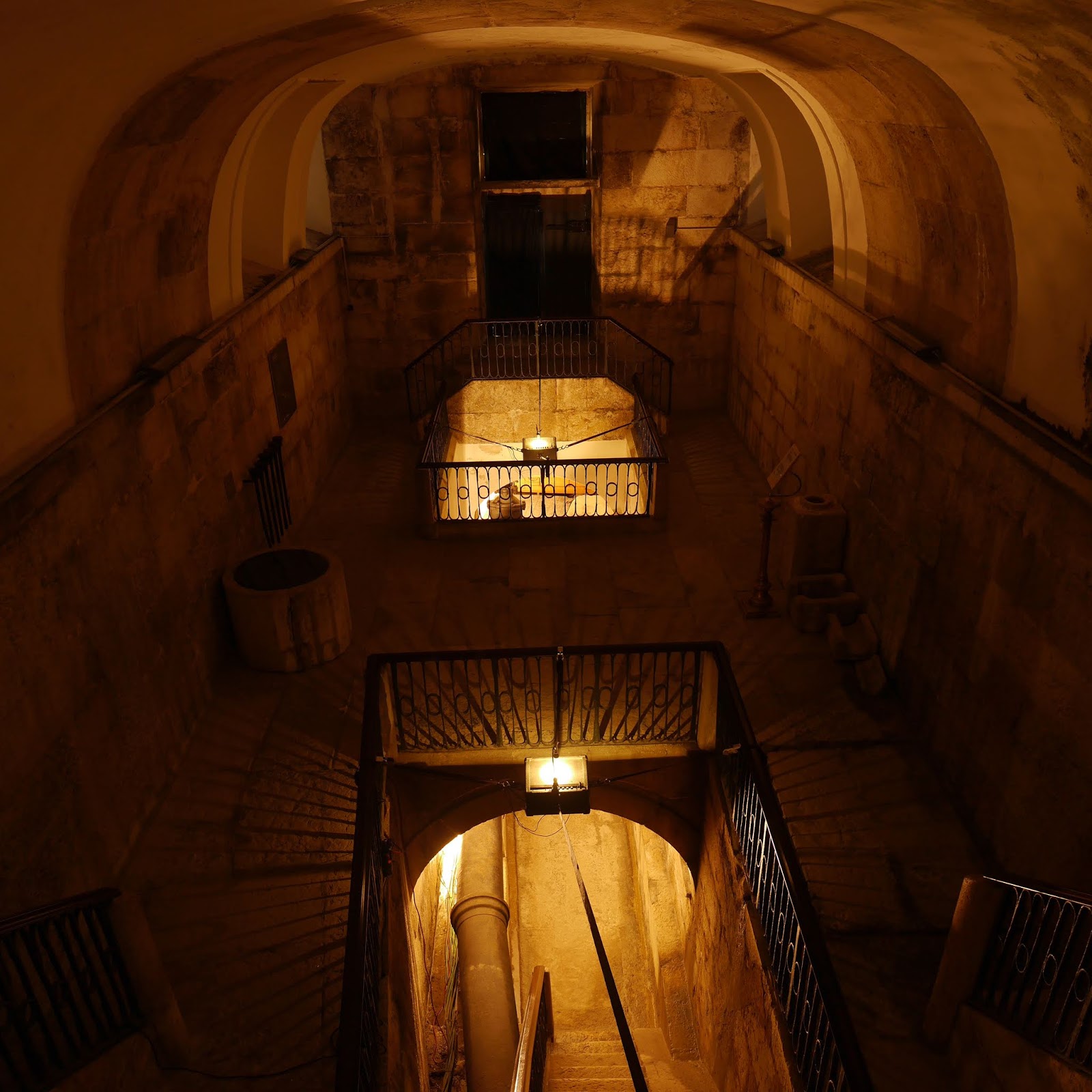Amplificadores Marshall de Guitarra y Bajo. Correas de Seguridad, lámparas. Composición Sonora.
Dimensiones Variables
_
Live recording from above at Mae d'Agua, Lisbon.
Live recording from below at Mae d'Agua, Lisbon.
Soundwalk from at Mae d'Agua and through the tunnel, Lisbon.
_
Sínia in catalan, is the given name for a noria, a wheel-like machine used for lifting water into a small aqueduct or for the purpose of irrigation.
It consists on a vertical iron wheel with a chain of
buckets attached to it. Norias used to be driven by animals, turning
another wheel to make the vertical one to spin, and therefore lifting
the water. On the outskirts of Torredembarra (Tarragona) there is a
substantial concentration of those water machines, probably due to a
underground aquifer that supplied water for the agriculture fields
around. Those machines that were used on the past, now a days are out of
order and even abandoned, allowing the iron to rust as time goes by.
A sound that used to shape countryside water
soundscape in the Tarragona region is now gone after years of
implementing big and ambitious hydraulic plans bringing water from
hundreds of miles away. This piece is based on the idea of making the
rusted iron wheel to work again. The outcome is a sound piece
that evokes the long gone sound of the noria by using it again, without
water and without animal traction, anything but an aesthetic exercise
as purpose.
The idea is to bring into the hall the resulting soundscape of a long-gone technology that has lost its usage: bring water up from a well. The iron, metallic sweeps and intricate rusted sounds are the voice of antique water culture long forgotten. All sounds have been recorded in various sessions since 2012, through the years, the sound of the noria is always changing and evolving, depending on humidity, climate and anual seasons.
This installation inserts the rusted sound of this abandoned and
derelict rural hydraulic engine into the given exhibition space through
the use of Marshall Guitar Amps. The use of this specific kind of amplifiers is a call back to the sonorities of the rusted noria, that somehow resemble the feedback from an electric guitar, stablishing a new symbolical layer to the piece. The two iconic amps are suspended in mid-air hanging from a wire structure dialoguing with the space through materials, sounds and media.
_
This
work has originally commissioned by Lisboa Soa Festival 2018. Curated by
Raquel Castro and featured at the Mae d'Agua (Amoreiras, Lisboa) between
the 20th and 23rd of September 2018.
This site specific sound composition has been presented as a live
perfomance three times. First time was presented at Plutón.cc in
Valencia and performed live with cellist Sara Galán. Second time the
piece was presented at Matadero Madrid in January 2013 and finally a
third time at Caleidoscopi in Barcelona. This works is going to be a
part of Cello + laptop upcoming album and will be performed live in the
future by Comelles as a solo piece or with cellist Sara Galán. The work
has also been broadcasted in various acousmatic events organised by EAH
in Helsinki, Finland.
_
_
Live concert review (in catalan):
l’Edu Comelles, qui normalment treballa a partir d’enregistraments de camp, aquesta vegada va utilitzar àudios presos d’una “noria”, segons el mateix va descriure abans de començar. Barrejava diferents materials per crear textures contrastants a vegades harmòniques i a vegades més rítmiques.

Jo personalment no podia parar d’imaginar engranatges i friccions de metalls que produïen aquests grinyols tan melòdics, i alhora no podia parar de preguntar-me si la peça tindria sentit si no sabés d’on venien aquests sons.
Però això no és alguna cosa que se m’hagi acudit a mi per primera vegada; ja ho pensava Pierre Schaeffer quan gravava sons i els repetia infinites vegades fins que perdien la seva connexió amb l’objecte que els produïa. Crec que en aquesta època (50s) gravar i transformar sons prenia una altra dimensió en aconseguir sonoritats úniques sortides de context, però crec que amb tants avanços tecnològics és possible produir (o reproduir) gairebé qualsevol so imaginable, llavors he arribat a la conclusió que l’Edu en el seu concert no tenia més opció que lligar novament el so a l’objecte, perquè fóssim nosaltres els qui féssim aquesta unió o separació entre so-objecte.
By: Lina Bautista, Hangar.org.
_










